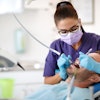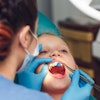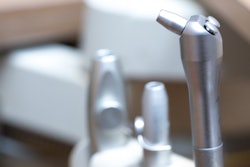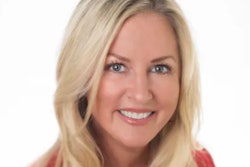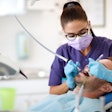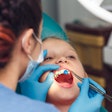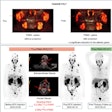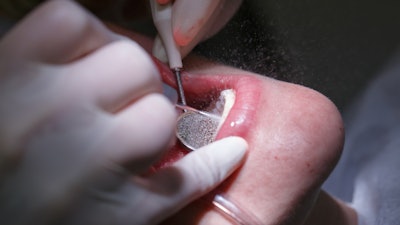
As dental professionals, one thing we can’t afford to overlook is the importance of clean and safe water for our patients. Dental unit waterlines (DUWLs) play a crucial role in providing the water we need for various dental procedures, such as rinsing, cooling, and irrigation. But if we don’t take care of waterlines properly, they can turn into hotspots for harmful bacteria, putting our patients at risk for infections.
Microbial contamination within dental waterlines is an ongoing challenge that demands our unwavering attention. The intricate design of DUWLs, along with the presence of narrow tubing and stagnant water, provides an ideal breeding ground for the growth of bacteria, fungi, and other pathogens.
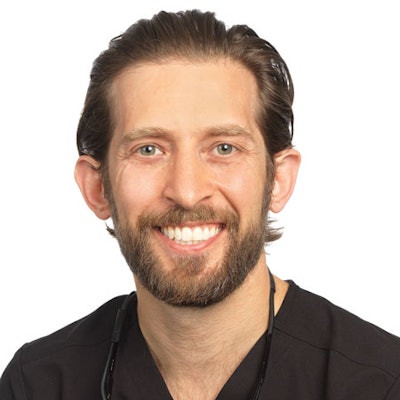 Dr. Alex Vasserman.
Dr. Alex Vasserman.
Recognizing this pressing issue, manufacturers in the dental industry have stepped up to the plate by designing, developing, and marketing a diverse range of highly effective products. These solutions are specifically tailored to guarantee the delivery of clean and safe water, providing dental practices with the essential tools to uphold the highest standards of patient care and safety.
Considerations on choosing DUWL safety products for your practice
Selecting the appropriate DUWL products for your practice is an important step in safeguarding the health and safety of your patients. As you explore various options, consider these key attributes:
- Efficacy against microbial contamination. Look for products that are specifically designed to control and prevent microbial contamination within dental waterlines. They should be effective in reducing bacteria, fungi, and other microbial pathogens that can potentially pose health risks to patients.
- Compliance with regulatory standards. Ensure that the products meet or exceed the necessary regulatory standards guidelines for dental waterline safety. Products registered, validated, and in compliance with organizations like the U.S. Environmental Protection Agency and the U.S. Centers for Disease Control are essential.
- Ease of implementation. Consider the ease of integrating the product into your existing DUWL system. Look for products that can be easily installed and managed without significant disruptions to your daily operations.
- Compatibility with equipment. Verify that the products are compatible with the specific dental equipment and waterlines in your practice. Some products may work better with certain types of dental units, so it’s essential to find a suitable match.
- Long-term cost considerations. Assess the long-term cost implications of implementing a DUWL product. While some options may cost more, they might prove more cost-effective in the long run due to reduced maintenance or longer-lasting effects.
- Effect on water taste and odor. Some waterline disinfection products can alter the taste and smell of the water used during dental procedures, which, while safe, may be disagreeable to patients. Look for products that produce clean, clear, odorless, colorless, and tasteless water.
- Peer reviews and recommendations. Seek feedback from other dental professionals who have used the products. Online reviews and recommendations from peers can offer valuable insights into the real-world performance of the products.
By carefully considering these attributes, you can confidently select the DUWL products that align with your practice’s needs. Making the right choices will ensure a safe, hygienic environment and contribute to the success of your practice.
Ultimately, I decided on an integrated suite of DUWL treatment and maintenance solutions offered by Sterisil, a company that specializes in water treatment, purification, and testing solutions. What stood out for me was the ease of use, time savings, and the remarkable efficacy against microbial contamination.
I also took the time constraints and workload of my dental team into consideration. Dental assistants and hygienists are, of course, directly involved in patient care and perform various tasks throughout the day. I made sure the DUWL solutions I chose would not add complexity or significant time to their daily routines, opting for user-friendly products that seamlessly integrated into their workflow.
The learning curve is also an important consideration, as introducing new products to your team requires training and familiarization. Selecting products that require minimal training and are easy to use allows your team to quickly get up to speed. Additionally, solutions that require less maintenance and deliver long-lasting effects can lead to cost savings over time. For example, using water purification tablets daily is not only time-consuming but incurs ongoing costs. Choosing an antimicrobial straw and bottle combination that provides clean and safe water for an entire year before needing to be replaced is, in my opinion, a superior choice.
Lastly -- and this is something I learned through researching various DUWL treatment options -- look for waterline disinfection and maintenance products that do not contain iodine or bleach. These chemicals cause oxidation when in contact with metal in handpieces, which leads to corrosion and pitting. Antimicrobial straws and tablets that use silver -- a natural disinfectant -- are a safer option and will not damage handpieces, prolonging their lifespan and avoiding costly repairs and downtime.
Conclusion
Finding the right DUWL safety products for your dental practice is a critical decision that can have a direct impact on the well-being of your patients. After carefully considering the key attributes, I confidently selected an integrated suite of products that ticked all the boxes: easy to use, highly effective, compatible with our equipment, cost-effective in the long term, and which provided worry-free waterline treatment for an entire year. These solutions have made a real difference in elevating our DUWL safety, demonstrating to our patients that their health and safety are at the forefront of everything we do.
Dr. Alex Vasserman received his master’s degree in medical science. He attended the Boston University School of Dental Medicine and completed his residency at Wyckoff Heights Medical Center in Brooklyn, NY. He launched his practice in 2013, which today is located on New York City’s Upper East Side. Vasserman is a member of the Seattle Study Club, the Academy of General Dentistry, the American Academy of Cosmetic Dentistry, the ADA, and the New York State Dental Association.
The comments and observations expressed herein do not necessarily reflect the opinions of DrBicuspid.com, nor should they be construed as an endorsement or admonishment of any particular idea, vendor, or organization.

